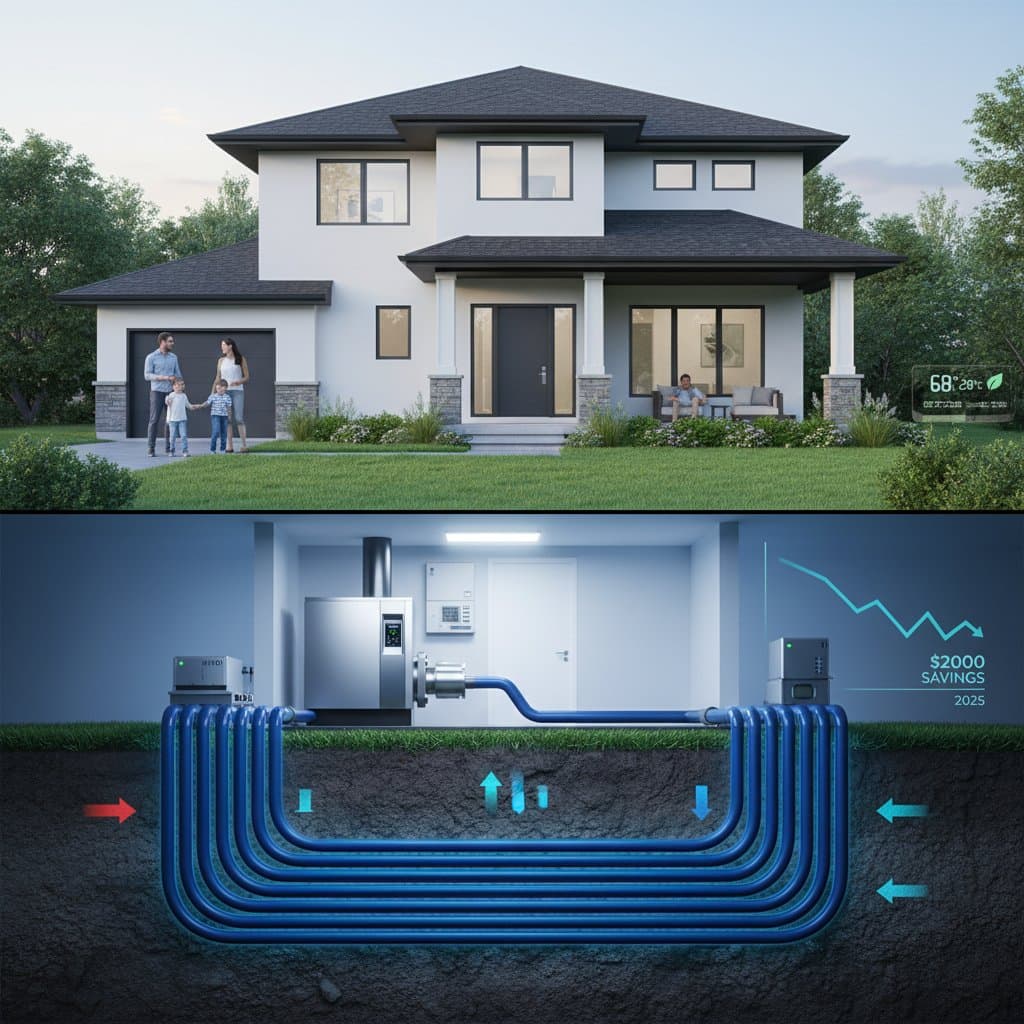Understanding Geothermal Cooling
Geothermal cooling harnesses the stable temperatures found underground to regulate indoor climates efficiently. Unlike traditional air conditioners that rely on electricity-intensive compressors, these systems exchange heat with the earth through buried loops of piping. This process provides consistent cooling during hot months without the high energy demands of conventional units.
Homeowners often overlook the earth's thermal properties, which remain around 55 degrees Fahrenheit year-round just a few feet below the surface. Geothermal systems tap into this resource to absorb excess indoor heat and release it into the cooler ground. The result is a reliable, low-energy method for maintaining comfortable temperatures even on the hottest days.
How Geothermal Systems Operate
A typical geothermal cooling setup includes a heat pump located indoors, connected to a series of underground loops filled with water or antifreeze. During summer, the system circulates fluid through these loops to draw heat from the home and transfer it to the earth. This closed-loop design ensures minimal fluid loss and maximum efficiency over time.
The heat pump serves as the core component, using electricity only to operate pumps and fans rather than generating cooling from scratch. Ground-source loops come in horizontal, vertical, or pond configurations, depending on available yard space and soil conditions. Engineers assess site specifics to recommend the optimal layout, ensuring the system performs effectively for decades.
Installation professionals handle the excavation and piping placement with precision to avoid disrupting landscapes. Once operational, the system integrates seamlessly with existing ductwork or hydronic heating setups. Regular maintenance involves simple tasks like filter changes, keeping operational costs low compared to standard AC units.
Key Benefits of Geothermal Cooling
One primary advantage lies in energy savings, with many users reporting reductions in cooling bills by 60 percent or more. These systems achieve efficiencies two to three times higher than conventional air conditioners, as measured by their coefficient of performance. Over a typical summer season, this translates to hundreds of dollars saved per household.
Beyond cost reductions, geothermal setups enhance home durability by operating at lower pressures and temperatures. This gentler functioning extends equipment life, often to 25 years or longer for the heat pump and 50 years for the ground loops. Property values also rise, as energy-efficient features appeal to eco-conscious buyers in competitive markets.
Environmental gains further elevate these systems. They cut greenhouse gas emissions by relying less on fossil fuel-generated electricity for cooling. In regions with renewable energy grids, the impact becomes even more pronounced, supporting broader sustainability goals without sacrificing comfort.
- Energy Efficiency: Achieves up to 60 percent lower cooling costs through earth-based heat exchange.
- Longevity: Ground loops last 50 years; indoor components endure 25 years with minimal upkeep.
- Versatility: Provides both heating and cooling, ideal for year-round climate control.
- Quiet Operation: Lacks noisy outdoor compressors, ensuring peaceful indoor environments.
- Incentives: Qualifies for federal tax credits and local rebates to offset upfront expenses.
Installation Process and Considerations
Planning a geothermal installation begins with a professional site evaluation to determine soil type, water table, and available space. Vertical loops suit smaller lots, drilling 100 to 400 feet deep, while horizontal options work for larger areas with shallow trenches. Pond or lake loops offer alternatives if water bodies are nearby, using submerged piping for heat transfer.
The process typically spans one to two weeks, involving excavation, loop burial, and heat pump connection. Costs range from 20,000 to 40,000 dollars for a standard home, influenced by system size and loop configuration. Drilling in rocky soil or remote locations may increase expenses, but detailed quotes from certified installers provide clarity upfront.
Homeowners should select contractors experienced in geothermal projects, verifying certifications from organizations like the International Ground Source Heat Pump Association. Post-installation, systems require annual inspections to monitor fluid levels and pump performance. These steps ensure optimal function and preserve warranty coverage.
Financing Options for Geothermal Systems
Upfront costs present the main barrier, yet numerous financing avenues make geothermal accessible. Federal tax credits cover 30 percent of qualified expenses through the Residential Clean Energy Credit, applicable until 2032. State and utility rebates often add further reductions, potentially lowering net costs by thousands.
Low-interest loans from banks or green energy programs spread payments over 10 to 20 years, aligning with the system's lifespan. Some homeowners tap home equity lines of credit, leveraging increased property values post-installation. Utility companies may offer on-bill financing, where monthly energy savings directly offset loan payments.
- Research local incentives via energy department websites.
- Obtain multiple contractor bids for competitive pricing.
- Calculate payback periods, often 5 to 10 years based on usage and rates.
- Consider hybrid systems pairing geothermal with existing HVAC for phased upgrades.
These strategies transform initial investments into manageable plans, accelerating returns through bill reductions.
Long-Term Impact on Home Comfort
Geothermal cooling redefines reliable climate control by delivering even temperatures without the fluctuations of traditional AC. Indoor humidity levels stay balanced, improving air quality and reducing mold risks. Families enjoy consistent comfort zones, from living rooms to bedrooms, fostering healthier living spaces.
As energy prices rise and climate concerns grow, these systems position homes for future resilience. They integrate well with smart thermostats for remote monitoring and automated adjustments. Over time, the cumulative savings and reliability build equity in sustainable living practices.
Adopting geothermal technology means prioritizing efficiency today for enduring benefits tomorrow. Homeowners who install these systems often cite enhanced peace of mind alongside financial gains. This approach not only cools spaces effectively but also contributes to a more stable energy future.








